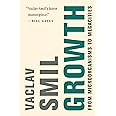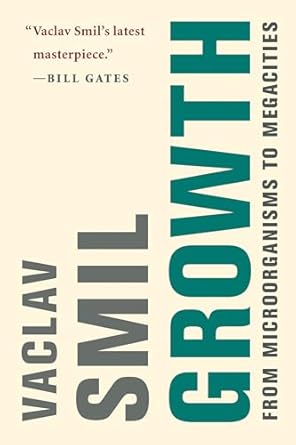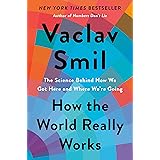
Enjoy fast, free delivery, exclusive deals, and award-winning movies & TV shows with Prime
Try Prime
and start saving today with fast, free delivery
Amazon Prime includes:
Fast, FREE Delivery is available to Prime members. To join, select "Try Amazon Prime and start saving today with Fast, FREE Delivery" below the Add to Cart button.
Amazon Prime members enjoy:- Cardmembers earn 5% Back at Amazon.com with a Prime Credit Card.
- Unlimited Free Two-Day Delivery
- Streaming of thousands of movies and TV shows with limited ads on Prime Video.
- A Kindle book to borrow for free each month - with no due dates
- Listen to over 2 million songs and hundreds of playlists
- Unlimited photo storage with anywhere access
Important: Your credit card will NOT be charged when you start your free trial or if you cancel during the trial period. If you're happy with Amazon Prime, do nothing. At the end of the free trial, your membership will automatically upgrade to a monthly membership.
Buy new:
-30% $28.01$28.01
Ships from: Amazon Sold by: Elmira Bookshop
Save with Used - Acceptable
$8.79$8.79
Ships from: Amazon Sold by: 2nd Life Aloha





Download the free Kindle app and start reading Kindle books instantly on your smartphone, tablet, or computer - no Kindle device required.
Read instantly on your browser with Kindle for Web.
Using your mobile phone camera - scan the code below and download the Kindle app.

 Audible sample Sample
Audible sample Sample 


Growth: From Microorganisms to Megacities (Mit Press) Hardcover – September 24, 2019
Purchase options and add-ons
Growth has been both an unspoken and an explicit aim of our individual and collective striving. It governs the lives of microorganisms and galaxies; it shapes the capabilities of our extraordinarily large brains and the fortunes of our economies. Growth is manifested in annual increments of continental crust, a rising gross domestic product, a child's growth chart, the spread of cancerous cells. In this magisterial book, Vaclav Smil offers systematic investigation of growth in nature and society, from tiny organisms to the trajectories of empires and civilizations.
Smil takes readers from bacterial invasions through animal metabolisms to megacities and the global economy. He begins with organisms whose mature sizes range from microscopic to enormous, looking at disease-causing microbes, the cultivation of staple crops, and human growth from infancy to adulthood. He examines the growth of energy conversions and man-made objects that enable economic activities—developments that have been essential to civilization. Finally, he looks at growth in complex systems, beginning with the growth of human populations and proceeding to the growth of cities. He considers the challenges of tracing the growth of empires and civilizations, explaining that we can chart the growth of organisms across individual and evolutionary time, but that the progress of societies and economies, not so linear, encompasses both decline and renewal. The trajectory of modern civilization, driven by competing imperatives of material growth and biospheric limits, Smil tells us, remains uncertain.
- Print length664 pages
- LanguageEnglish
- PublisherThe MIT Press
- Publication dateSeptember 24, 2019
- Dimensions6.38 x 1.63 x 9.38 inches
- ISBN-100262042835
- ISBN-13978-0262042833
The Amazon Book Review
Book recommendations, author interviews, editors' picks, and more. Read it now
Frequently bought together

Similar items that may deliver to you quickly
Editorial Reviews
Review
Smil, whose research spans energy, population and environmental change, drives home the cost of growth on a finite planet. It is high: polluted land, air and water, lost wilderness and rising levels of atmospheric carbon dioxide.... Growth urges us to think differently. That is desperately needed to manage the trade-offs in making renewables more efficient, improving economic incentives for fast adoption, minimizing environmental degradation and bettering lives in a swelling population.
—Nature—Growth, whether biological, social or economic, may be normal, [Smil] says, but the exponential growth in economies and lifestyles we have seen in recent decades isn't, and can't continue without disastrous consequences.
—New Scientist—Growth is filled with numbers, graphs and mathematical notation. Yet it's written to be easily understood by non-mathematicians, making brilliant but accessible use of statistics to illustrate salient features of growth in all its terrestrial forms (the book's scope is limited to Earth). In short, Growth is a compelling read.
—Resilience: International Policies, Practices and Discourses—A somewhat eccentric but really rather compelling read. The subtitle indicates its ambition. We do literally go from the growth dynamics of archaea and bacteria all the way to empires.... The joy of this book is less in the big picture than in the detail. And what a lot of it! The mind boggles at Smil's extensive reading and absorption of information. We get the speed at which marathons are run – over the entire course of human history; the growth rates of piglets and weight of chickens over time; sales of small non-industrial motors over time; the envelope for the maximum speed of travel; Kuznets cycles; Zipf's law for city size.... The middle section of chapters offer a fantastic overview of technical progress over long periods in a wide range of technologies. I love all this detail.
—Diane Coyle, The Enlightened Economist—A rich and unique work from one of the leading interdisciplinary minds in the world today.... An outstanding reference guide for growth in its many forms, I don't hesitate to say that Growth should find its way onto the bookshelves of everybody interested in understanding the complexity of growth and how it affects the urban landscape.
—Spacing Vancouver—In his new book, Growth — a dense, 500-page treatise that covers everything from 'microorganisms to megacities,'... Smil makes perhaps an even-more-off-putting proposition: that in order to 'ensure the habitability of the biosphere,' we must at the very least move away from prioritizing growth and perhaps abandon it entirely.
—New York Magazine—Smil's weighty tome turns out to be both entertaining and erudite, exploring the benefits and limits of material growth to reach a fundamental point about the uncertainty of civilization's survival and the importance of maintaining a habitable biosphere to ensure it.
——About the Author
Product details
- Publisher : The MIT Press; First Edition (September 24, 2019)
- Language : English
- Hardcover : 664 pages
- ISBN-10 : 0262042835
- ISBN-13 : 978-0262042833
- Item Weight : 2.33 pounds
- Dimensions : 6.38 x 1.63 x 9.38 inches
- Best Sellers Rank: #311,319 in Books (See Top 100 in Books)
- #173 in Environmental Policy
- #503 in Ecology (Books)
- #670 in Environmentalism
- Customer Reviews:
About the author

Vaclav Smil is currently a Distinguished Professor in the Faculty of Environment at the University of Manitoba in Winnipeg, Canada. He completed his graduate studies at the Faculty of Natural Sciences of Carolinum University in Prague and at the College of Earth and Mineral Sciences of the Pennsylvania State University. His interdisciplinary research interests encompass a broad area of energy, environmental, food, population, economic, historical and public policy studies, and he had also applied these approaches to energy, food and environmental affairs of China.
He is a Fellow of the Royal Society of Canada (Science Academy) and the first non-American to receive the American Association for the Advancement of Science Award for Public Understanding of Science and Technology. He has been an invited speaker in more than 250 conferences and workshops in the USA, Canada, Europe, Asia and Africa, has lectured at many universities in North America, Europe and East Asia and has worked as a consultant for many US, EU and international institutions. His wife Eva is a physician and his son David is an organic synthetic chemist.
Official Website: www.vaclavsmil.com
Customer reviews
Customer Reviews, including Product Star Ratings help customers to learn more about the product and decide whether it is the right product for them.
To calculate the overall star rating and percentage breakdown by star, we don’t use a simple average. Instead, our system considers things like how recent a review is and if the reviewer bought the item on Amazon. It also analyzed reviews to verify trustworthiness.
Learn more how customers reviews work on Amazon-
Top reviews
Top reviews from the United States
There was a problem filtering reviews right now. Please try again later.
At times, entire pages read like a rambling lecture from one of your college elective classes. There are sprinkles of interesting facts and observations with a huge number of citations, but the author almost comes across as a drunk fool. He doesn't write with a purpose. I found myself reading entire pages of rather dense material, where a single sentence goes on and on for at least 4 or more lines. There are many passages where there are no real "takeaways". There are sentences that could be ripped apart or stripped out entirely and the main idea explained in six or seven words without losing detail.
I don't want to accuse the author of anything, and I'll admit he excessively provides citations. But I gotta say – this book could be half its size if the author cut the bullshit. The complex writing is a delusion of grandeur. The reader is not better off by wasting time on these puzzles.
New types of energy systems like pumped-hydro energy storage can achieve exponential growth in many of the mountainous countries. Solar thermal also has yet to see very strong exponential growth as most new solar is the photovoltaic type. Prof. Smil's books are very good for a precise understanding of our challenges.
It's academic prose. The author has an encyclopedic grasp of growth rates and lists every single one of them, but doesn't often draw insights from them or offer interesting conclusions. He defines growth very broadly. Anything that changes in a way that can be measured and is increasing in count. Heart surgeries performed since the year 0. Is that growth? Yes. Is that raw number with noo added analysis or parallels drawn interesting? I found it dry.
By defining growth broadly and then listing "things that changed", the discussion becomes kind of boring and finding areas of interest or insight is an exercise left up to the reader.
If you enjoy reading a list of statements about the rate something changed over a period of time, you will enjoy reading the first few sections of this book, which is as far as I got.
Top reviews from other countries
As pointed out in other reviews in this book, sometimes, the text is reduced to listing numbers and dates. Although this can be boring for somebody, these parts are highly informative.
It seems that the book does not have any particular target audience. In my opinion, it could be attractive for anybody dealing with forecasting, persons interested in history of technology, economists etc. Similarly to wide range of knowlede presented in the book, the audience is also wide.
However, he only makes one step, and I think this is not enough in a 600 page book. What is missing is a little bit of mathematics. For instance, the author speaks of "an asymmetrical (five-parameter) sigmoid" as if everybody could decypher that, but he never gives the equation nor explains what are those 5 parameters. In fact, the author gives the equation of only one curve, which is almost useless since it cannot be contrasted with the equations of other curves. It seems like the author is victim of the doing-maths-without-the-equations syndrom; it looks smart, but it tells nothing. The author could have spared a few pages of the total 600 to explain the maths of all these curves. It does not mean big maths, reserved for the few, but simply high-school maths. And it could even have served an urgent purpose: namely to reconcile the interest for the factful world and the interest for mathematics, especially at a high-school level.












